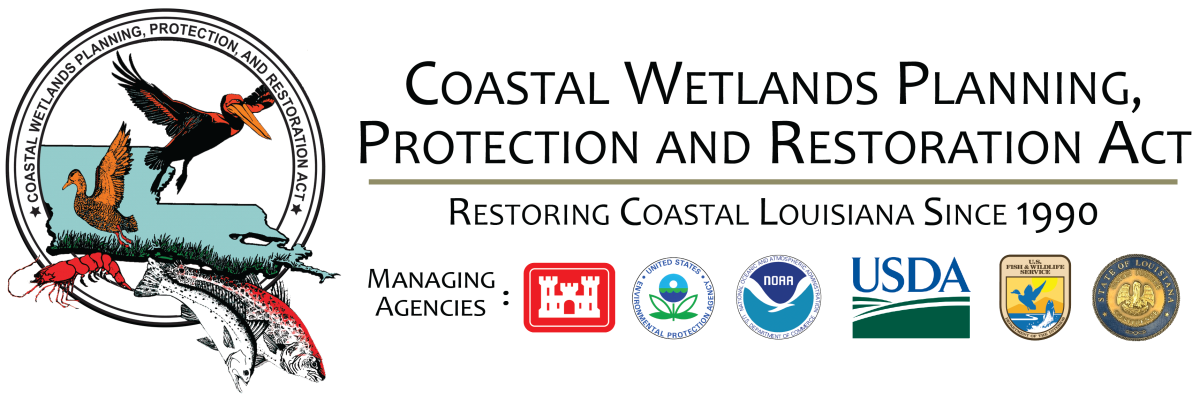
An engineer on CWPPRA’s Engineering Workgroup, Jacques Boudreaux makes sure CWPPRA restoration and protection projects meet the State of Louisiana’s Coastal Master Plan.
Q: What is your job title and description?
A: I am an Engineer 6-DCL in CPRA’s Engineering Division, dealing primarily with the design and review of engineering submittals as they pertain to the restoration side of CPRA’s Master Plan. I also represent CPRA in CWPPRA’s Engineering Workgroup, assist the Coastal Master Plan Team on MP2023, and fulfill a few other roles here.
Q: Describe the part of your job/role that you enjoy the most.
A: The amount of responsibility we place on our younger staff has always been one of the most attractive things about the job to me. If you poll around our Engineering Division for example, you’ll find out that all of our engineers are placed in lead engineering roles on multi-million dollar projects. It’s been my experience that in the private sector, more senior level engineers are usually assigned tasks like these. I find because of this, CPRA is a truly remarkable place to develop young engineers and scientists. It’s tough to pick just one part of the job though.
Q: Describe the part of your job/role that you believe is the most impactful.
A: I think the emphasis we place on effective communication is hands down the most impactful. To me, this transcends so much of what we’re here to do in the engineering profession. Not only does this facilitate good working relationships when you’re on a team with multidisciplinary backgrounds, but it also helps when other engineers check your work and go through the quality control process to assure that your engineering logic is properly thought out. This cascades out to so many other things too, like when we present our projects to all the different types of stakeholders you see on CPRA projects, such as our federal partners through the CWPPRA program, local and Parish governments, non-governmental organizations, coastal residents, the list goes on. The leadership at CPRA and within CPRA’s Engineering Division are huge on this for sure.
Q: What do you think is the best/easiest way community members can help restore or preserve wetlands?
A: There are so many ways community members can get involved, but the one-sentence version is that it all boils down to knowledge. If you are the type of person that is inquisitive and wants to better understand why things work a certain way, you’ll find out very quickly that there is no shortage of information. Whether it be scientific literature in academic journals, engineering and design submittals, or geophysical data collection reports, there are multitudes of things out there that go into detail on the how, what, when, where, and why for all of our projects. In addition to this, CPRA holds a series of public meetings on everything we do, such as the development of our Coastal Master Plan to name an example. CWPPRA, of course, is one of the longest standing and most public-facing coastal restoration programs out there, one which CPRA is honored to be a partnering agency. If anyone wants to help and figure out how to become more involved, those are great places to start.
Q: What is your favorite recreational activity to do in the wetlands? OR Which wetland inhabitant (bird, fish, plant, etc) do you think best represents you and why?
A: It has got to be meeting all the different characters while working throughout Coastal Louisiana. You hear so many stories, meet such interesting and unforgettable people, and learn a lot about the remote towns/areas just by sitting back and listening to the old folks talk.
The Pelican in Her Piety has always spoken to me—the act of selflessness and the urge to provide for those in need out of pure, unconditional love.
Q: Is there anything else that you’d like to tell us about yourself or your work in coastal protection and restoration?
A: I have to say first and foremost thanks so much for the opportunity! Instead of talking more about me, I want to extend a huge thank you to all those involved in coastal restoration in Louisiana. We have some real talent here helping in this state. But I think we all owe a debt of gratitude to the first generation of scientists that started sounding the alarm back in the 1970s. It was them, along with folks like Senator John Breaux, who started the whole process by shining a sobering light on the coastal crisis in Louisiana which ultimately paved the way for the allocation of coastal restoration funds to Louisiana. As a lifelong Louisiana resident, I think I speak for us all when I say we needed this yesterday.


